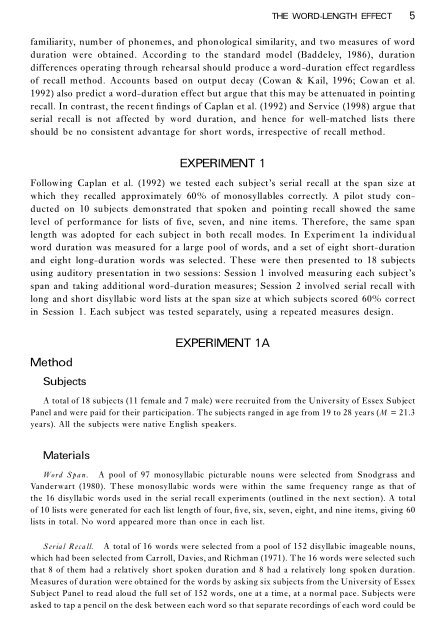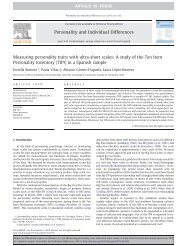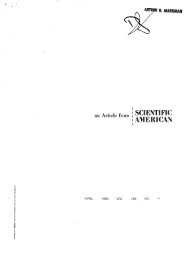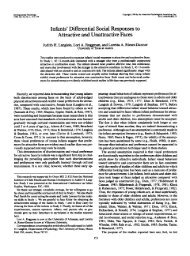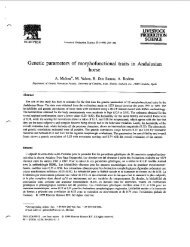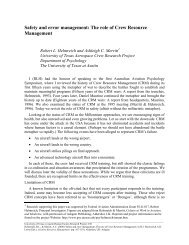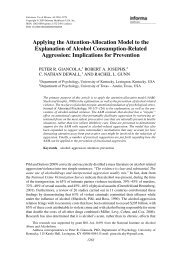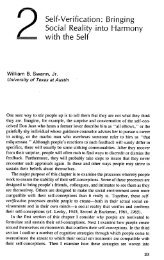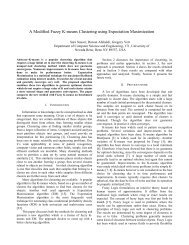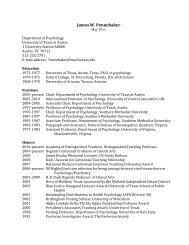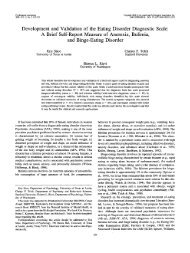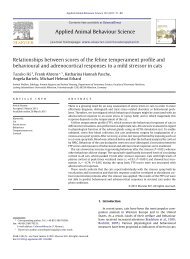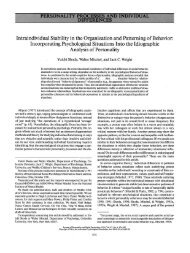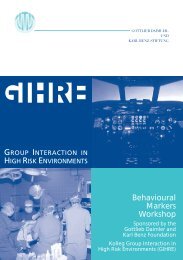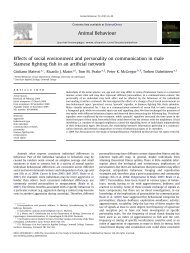The Word-Length Effect and Disyllabic Words (Lovatt
The Word-Length Effect and Disyllabic Words (Lovatt
The Word-Length Effect and Disyllabic Words (Lovatt
Create successful ePaper yourself
Turn your PDF publications into a flip-book with our unique Google optimized e-Paper software.
THE WORD-LENGTH EFFECT 5<br />
familiarity, number of phonemes, <strong>and</strong> phonological similarity, <strong>and</strong> two measures of word<br />
duration were obtained. According to the st<strong>and</strong>ard model (Baddeley, 1986), duration<br />
differences operating through rehearsal should produce a word-duration effect regardless<br />
of recall method. Accounts based on output decay (Cowan & Kail, 1996; Cowan et al.<br />
1992) also predict a word-duration effect but argue that this may be attenuated in pointing<br />
recall. In contrast, the recent ®ndings of Caplan et al. (1992) <strong>and</strong> Service (1998) argue that<br />
serial recall is not affected by word duration, <strong>and</strong> hence for well-matched lists there<br />
should be no consistent advantage for short words, irrespective of recall method.<br />
EXPERIMENT 1<br />
Following Caplan et al. (1992) we tested each subject’s serial recall at the span size at<br />
which they recalled approximately 60% of monosyllables correctly. A pilot study conducted<br />
on 10 subjects demonstrated that spoken <strong>and</strong> pointing recall showed the same<br />
level of performance for lists of ®ve, seven, <strong>and</strong> nine items. <strong>The</strong>refore, the same span<br />
length was adopted for each subject in both recall modes. In Experim ent 1a individu al<br />
word duration was measured for a large pool of words, <strong>and</strong> a set of eight short-duration<br />
<strong>and</strong> eight long-duration words was selected. <strong>The</strong>se were then presented to 18 subjects<br />
using auditory presentation in two sessions: Session 1 involved measuring each subject’s<br />
span <strong>and</strong> taking additional word-duration measures; Session 2 involved serial recall with<br />
long <strong>and</strong> short disyllabic word lists at the span size at which subjects scored 60% correct<br />
in Session 1. Each subject was tested separately, using a repeated measures design.<br />
Method<br />
Subjects<br />
EXPERIMENT 1A<br />
A total of 18 subjects (11 female <strong>and</strong> 7 male) were recruited from the University of Essex Subject<br />
Panel <strong>and</strong> were paid for their participation. <strong>The</strong> subjects ranged in age from 19 to 28 years (M = 21.3<br />
years). All the subjects were native English speakers.<br />
Materials<br />
<strong>Word</strong> Span. A pool of 97 monosyllabic picturable nouns were selected from Snodgrass <strong>and</strong><br />
V<strong>and</strong>erwart (1980). <strong>The</strong>se monosyllabic words were within the same frequency range as that of<br />
the 16 disyllabic words used in the serial recall experiments (outlined in the next section). A total<br />
of 10 lists were generated for each list length of four, ®ve, six, seven, eight, <strong>and</strong> nine items, giving 60<br />
lists in total. No word appeared more than once in each list.<br />
Serial Recall. A total of 16 words were selected from a pool of 152 disyllabic imageable nouns,<br />
which had been selected from Carroll, Davies, <strong>and</strong> Richman (1971). <strong>The</strong> 16 words were selected such<br />
that 8 of them had a relatively short spoken duration <strong>and</strong> 8 had a relatively long spoken duration.<br />
Measures of duration were obtained for the words by asking six subjects from the University of Essex<br />
Subject Panel to read aloud the full set of 152 words, one at a time, at a normal pace. Subjects were<br />
asked to tap a pencil on the desk between each word so that separate recordings of each word could be


